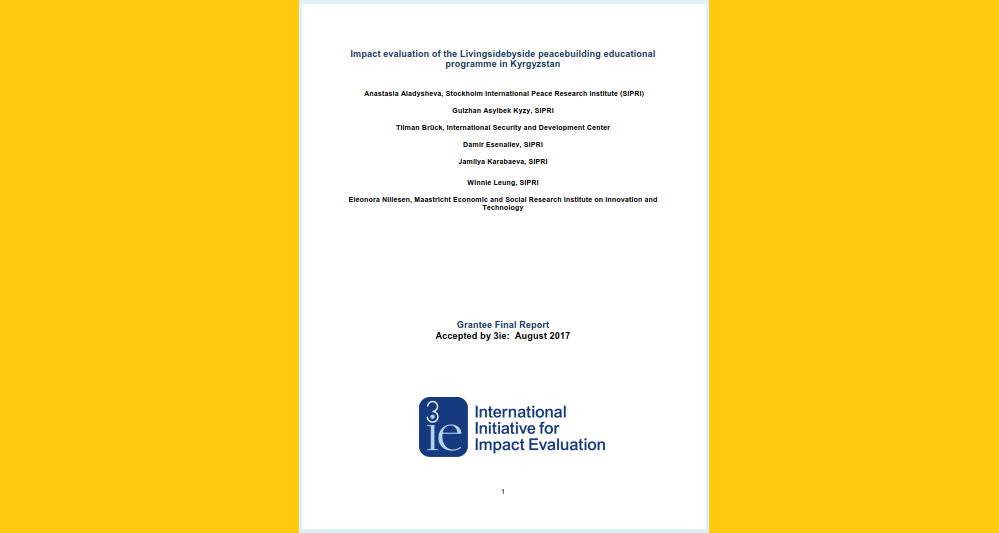
Impact Evaluation
Authors
Anastasia Aladysheva, Stockholm International Peace Research Institute (SIPRI)
Gulzhan Asylbek Kyzy, SIPRI
Tilman Brück, International Security and Development Center
Damir Esenaliev, SIPRI
Jamilya Karabaeva, SIPRI
Winnie Leung, SIPRI
Lonneke Nillesen, Principal of Research, CELL Foundation; Research Fellow, UNU-MERIT
Abstract: This study presents the results of an impact assessment of a school-based peace education program in southern Kyrgyzstan, that aims to promote interethnic and inter-religious tolerance and understanding. Ten schools were randomly selected from a sampling frame of 31 Russian-speaking schools to receive treatment. Using an oversubscription design we randomized treatment at the individual level. Participants received an eight-week extra-curricular training program teaching them how to take perspective, reflect on their own attitudes and beliefs and that of others, practice mediation skills and gain hands-on experience in cooperating with members of different ethnic groups through joint projects. We measure impacts on knowledge, beliefs/attitudes and behavior using a set of survey measures, behavioral experiments and focus groups discussions, immediately after the end of the training and one year after.
We find that knowledge and intergroup cooperation improves and sustains in the medium term as a result of the program. Beliefs and attitudes related to feeling at home in Kyrgyzstan and self confidence, however, seem to be negatively impacted by the program. These negative impacts are more pronounced among girls. Also, participants belonging to the country’s ethnic majority are affected more than those belonging to ethnic minorities. In sum, our results show a modest impact of the program on relevant outcomes. This may be due to the intervention being relatively “light” in terms of intensity and duration; the sample size and sample design, or some combination of these aspects. Future interventions and research designs should consider a larger and more heterogeneous sample of schools and testing varying versions of the programme that differ with respect to e.g. duration, intensity, subpopulations and format. This would help improve our understanding of which elements of a peacebuilding education work (best) and how such a program impacts various subgroups.
Key Words: Impact Evaluation, Peace Education, Kyrgyzstan
Published: January 2018
Contact us to get a copy of the full report.
NB: This report was published with explicit permission of the author. It was prepared for the International Initiative for Impact Evaluation (3IE).
